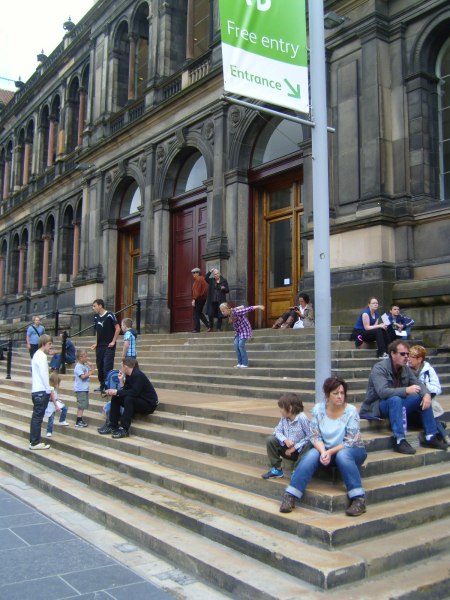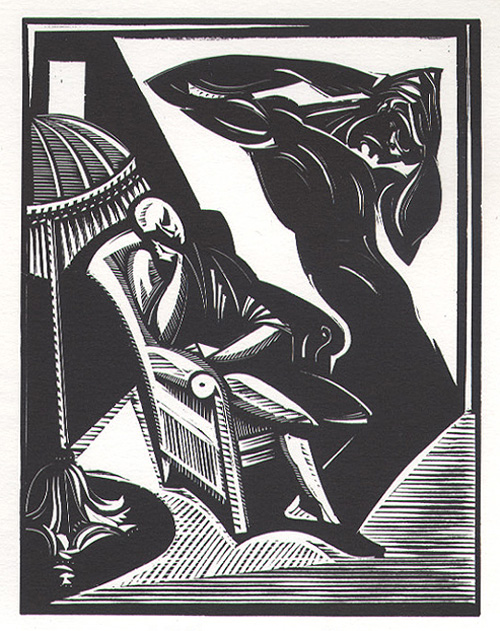On my recent trip to the UK, I managed a quick visit to the newly refurbished National Museum of Scotland in Edinburgh.
Our visit was on a Sunday morning at the height of the Fringe season, on our way to meet some friends for lunch. Having somewhere we had to be, combined with the fact that one of our group was only five months old, meant that realistically this was only ever going to be a lightning trip. Consequently, this review will be of first impressions and a critique of what I did get time to see.
According to this blog post by museum commentator Tiffany Jenkins, the refit took three years and £47 million. It’s proved popular, with visitor numbers passing the 100,000 mark less than a week after opening. Exhibition spaces were certainly beginning to fill up by the time we left.
Arrival and Entrance
One of the changes they have made is to the way visitors enter the building – rather than scaling the prominent steps, you now enter via an adjacent street-level door (although once inside the building it feels more like a basement than an entrance statement).

In her review Jenkins criticised this move, observing that many visitors gravitated toward the more prominent original entrance and missed the new entrance completely. To be honest I’m still in two minds about what I think about this myself – on the one hand, the street-level entrance was much easier to negotiate with a baby stroller, and I can see the rationale for having an entrance which meets universal access requirements. On the other hand, changes to navigation that go against the grain of usual expectations can be disorienting and counterproductive. It will be interesting to see how this settles in – the photo above shows how the steps have already been adopted as an informal outdoor gathering and relaxation space now that they don’t have to deal with volumes of visitor traffic. If this new purpose settles in and gains currency over time, then the street-level entrance could easily become ‘the new normal’*.
Once you pass through the basement you reach the central atrium of the original grand hall – this is where the original entrance would have taken you. This has been left quite open and minimal with only a few key objects – this works well as a space where you can make the psychological transition from ‘street’ mode to ‘museum’ mode. Most of the exhibition spaces run off this central space; this aids visit planning and site orientation. It could do with a bit more seating though:

Exhibitions
We started our visit in the Natural History area, and having a limited time budget this was one of the few galleries I managed to look at properly. (Later I broke away from the group so I could have a whistle-stop tour around more spaces and get more of an overall sense of the place.)
In the animals exhibition, displays were organised by characteristics of animals, eg. flight, adaptation to climate extremes, locomotion, size. This allowed interesting comparison of different animals’ adaptation to their respective environments and ecological niche. These displays were generally well grouped and signposted, so it was clear why certain animals had been placed together.

The introductory signage in each exhibition space gave a good, simple overview of the intended interpretive goal:

However, while I generally liked the succinct and well-layered interpretive text, I think it erred too much on the side of brevity. For instance, in many cases I was left wondering where certain animals were from, and whether they were extinct or abundant in the wild. Such information was all but absent, which struck me as a real gap (particularly as we are used to thinking about animals in terms of where they are from; the displays were not organised by habitat so there wasn’t any conceptual ‘anchor’ in this respect).
There were a few tactile displays, such as this one which allowed you to feel and compare the difference between horns which were made of bone, tooth or keratin:

Next to the Natural History galleries were the spaces dedicated to World Cultures. These were arranged by theme, allowing you to compare and contrast how different peoples around the world approach common aspects of human experience. I watched an interesting video about different wedding traditions, and found a Ghanaian coffin shaped like a Mercedes Benz both fascinating and disconcerting.
Regrouping in the museum cafe afterwards, my partner expressed disappointment that he had not seen anything particularly Scottish during his visit, given that we were meant to be in the country’s National Museum and all. It’s there, but unfortunately the Scottish history and culture displays are tucked away in an adjacent wing. This extension was probably built in the 80s or 90s, but in the layout of the refurbished museum it is a fair way off the beaten track and it was almost by accident that I found it at all. I’m not sure what the original intent was, but in its current configuration it is a confusing rabbit-warren of dead-end spaces.

Few visitors seemed to make it this far, and there was a noticeable thinning of visitor traffic compared to the galleries surrounding the main atrium.

As I said before, I probably only had an hour or so to look around and I’m sure there’s plenty I missed. Plus I never bothered to pick up a visitor map which may have made the extension easier to navigate.
Has anyone else visited NMS either recently or before the refurbishment? What were your experiences?
*Incidentally, I noticed that the National Gallery in London faces a similar dilemma. They have taken the option of maintaining both the original grand entrance as well as a newer alternative at street level. However, the signage was ambiguous and it wasn’t immediately obvious that the street level entrance actually *was* a proper entrance (as opposed to an entrance just for schools or tour groups), so we ended up needlessly lugging our suitcases up the main staircase.










